Are we going to enjoy stunning speed on 5G mobile phone soon?
(originally posted on hkxforce.net @ 11-Aug 2018)
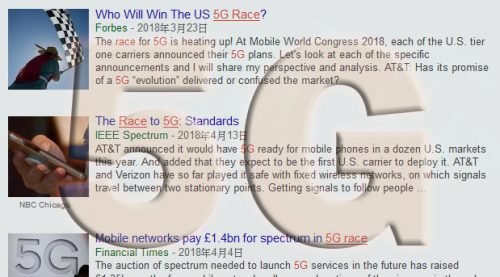
5G news are flooding everywhere in tech media. Live trials are achieving incredible data speed, e.g. 8Gbps, 12Gbps or even 16Gbps, which are hundreds times faster than current 4G LTE. The industry will start to rollout commercial 5G network in 2019. But can we really enjoy such stunning speed on our mobile phones next year? I bet we got to have more patience. Here’s why.
About radio technology
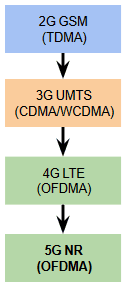
If you know about mobile technology, you’ll probably know that in previous 2G/3G/4G evolution, each generation is based on different radio technologies. Take European standard as example, 2G use TDMA, 3G use WCMA, and 4G use OFDMA. New technologies provide more means to achieve higher data speed (which will explain below). When it comes to 5G, the supporting technology is still OFDMA. Yes, it is the first time that the new mobile generation which radio technology doesn’t change. Newer technologies, like NOMA, are not ready yet to be commercially deployed. And that will limit our methods to further increase data speed.
Means to increase data speed
What difficulties are we facing in order to further increase data speed? Let’s examine the major means one by one. I’ll try to simplify the principles as much as possible, getting straight to the key points. If the explanations are still not clear enough, or I made any mistake, please feel free to voice out.
1. Higher order modulation
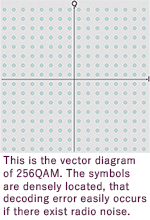
Imagine radio as a highway and the data are the passengers. If we use larger coaches to carry passengers, the transport efficiency will be increased. That’s what happening in radio modulation, which higher order modulation can carry more data. But as these ‘modulation coaches’ grow larger, they requires very clean highway, or else traffic accidents happens and passengers cannot get to the destination. As we have evolved from 3G to 4G, we have already reached the reality limit of modulation complexity. The highest order supported by latest 4G LTE is 256QAM, but we basically cannot use 256QAM unless we’re standing in front of base station antenna because 256QAM requires perfect radio environment. Thus further increase modulation order is meaningless in real world scenarios.
(diagram source: Wikimedia Commons 256-QAM constelation diagram)
2. Single user MIMO
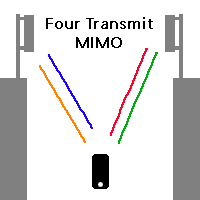
MIMO stands for multiple-input-multipe-output. Let’s back to the highway scenario. Double deck buses carry double passengers. That’s exactly what happens if we have double transmit and receive antennas. In basic theory, if two radio signals travel through the same path, they will interfere each other. Luckily, since the days of 3G, engineers made use of an radio characteristics called ‘polarization’, such that two signals can travel the same path without interfering each other (a.k.a. ‘orthogonal’), and thus we can enjoy two transmits two receive (2T2R) since the age of 3G.
But if we want to get even more transmit and receive, we really need a different traveling paths for the radio signals. This is one of the key mobile telecom research topics which scientists and engineers are working on in recent years. I was also working on this topic in live network implementation, but sadly I have to say it is still not mature yet. In real world scenario, you have to stand in particular precise location (e.g. exactly in the middle point between two antennas) in order to enjoy three transmit or four transmit. Well, mobility is the basic requirement of mobile telecommunication, right? I believe MIMO technologies will get better, but most likely it will not happen in near future.
3. Massive MIMO
If you are enthusiastic about mobile tech, probably you have heard of Massive MIMO. It is one of the hottest topic in recent years, and surely will be the key enabling technology for mature 5G networks. But in current stage, Massive MIMO can only work in some particular scenarios. Let’s refer to the illustration below.
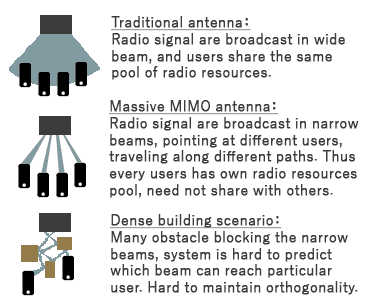
Current Massive MIMO technology can only handle wide open scenario, such as country side, where there exist very little obstacle between antenna and mobile phones. In places like Hong Kong, where we have dense building, the radio reflection/refraction are too complicated for the system to predict how radio beam can reach the mobile phones. Stay tuned, a lot of researches are still going on, and hopefully Massive MIMO can unlock the real potential of 5G network!
4. Wider bandwidth
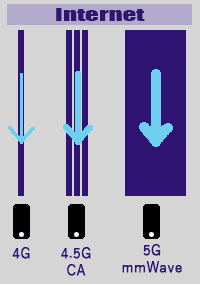
Now here comes the key technology which enable the industry to demonstrate the stunning fast data speed in 5G trials. Let’s get back to the highway scenario. Wider bandwidth simply means more lanes for traffic to travel. So the more lanes you have, the more traffic can pass through in the same time, so it brings faster data speed. Pretty easy, right?
But remember, we’ve already got many users on the highway. TV, satellite, 2G/3G/4G, cordless phone, walkies-talkie, all these services are using the highway. It is hard to free up ‘lanes’ for 5G. So here is the solution: build highway on the unused desert – the ultra-high frequency band, which called ‘mmWave’.
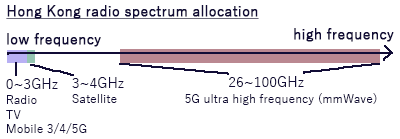
We had been stick on low frequency (lower than 6GHz) for so many years. As technology evolved, we can now make ultra high frequency antenna into relatively small size. It is still much bigger than normal mobile phones, but engineers are working on further downsizing. But the issues behind ultra high frequency were not only due to large (and expensive) antenna, but also its physical characteristic. It can only go straight.
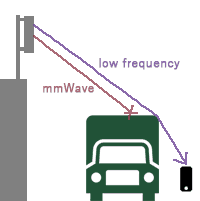
If you still remember the high school physics, electromagnetic waves have reflection and refraction properties. The higher the frequency is, the less refraction it have. In mobile telecom, we make use of refraction to get pass obstacles. When radio waves hit the edge of obstacle, it refracts and bend around the corner. That’s how we get mobile signal when a bus pass by, or when we’re at home. But due to mmWave is ultra high frequency, it basically do not refract. Whenever any obstacle exists between mobile phone and antenna, you’ll loss the signal. Reflection may helps in some cases, but similar to the case in Massive MIMO, it’s hard to predict the bouncing radio beam in dense building scenario.
Nowadays reality
Today most ultra fast 5G demonstration are using mmWave with direct line-of-sight signal. But we all know that in real application that does not always happens. One solution that the industry propose is to build 5G antennas everywhere. On every lamp pole, on every street corner. Wherever you go, there is 5G antenna round you. As a mobile engineer, surely this will bring more job opportunities for us. But is that realistic? The cost for such network architecture is tremendous. And people will surely worry about the radio safety if they found there are even more 5G antennas than the stars upon us.
In reality, most mobile network operators are going to launch 5G service in low frequency in the first stage, for example re-using the satellite frequency or 2/3/4G frequency. It will be much easier to implement, and these low frequency can provide similar coverage to existing mobile network. The ‘only’ problem is, these low frequency cannot provide wide bandwidth. As the bandwidth is similar to existing 4G, and 5G are still using OFDMA technology, low frequency implementation of 5G network will NOT bring you the stunning fast data speed. It will only similar to existing 4G LTE.
mmWave isn’t useless, but it got specific usage scenario, like providing hot spot capacity and wireless home broadband (FWA). It’s just not designed to provide full coverage service like what we’re using nowadays.
The bright future
When looking at the 5G fever which expand from telecom to almost all other industries, it reminds me of the 3G bubble about 20 years ago. With the extraordinary commercial success of 2G, everyone thought 3G would also be a gold mine. Tremendous amount of money was pour into 3G related product development. People thought video call would be the next "killer app", generating uncountable revenue. But the growth of 3G turned out almost no progress in the first 10 yeats. No application really need such network speed. The bubble bursted, and the industry felt into long term shrink until iPhone was born and finally people got to know what's the 3G data speed meaning for.
Is 5G meaningless then? Surely not. In my opinion, 5G brings mobile telecom an entirely new perspective. It will open up unlimited possibilities. But that is not due to stunning fast data speed. It is the compatibility, scalability and flexibility that guiding us to bright future.
Future mobile network can enable all different kinds of services. Power saving IoT network, ultra-low latency and high speed medical applications, easy managed wireless broadband (FWA), machine-to-macine communication etc. Mobile phones will no longer be the dominating device. Also, the network architecture will also undergo significant changes, in order to enable distributed computing amount network devices. Backend base stations (RAN) and core network will all migrate to cloud architecture. Cloud-RAN will enable advanced inter base station signal process and improve radio performance.
No one can tell if 5G can reach this far. But I’m pretty sure that 5G is the door towards this future. The industry should stop competing on data speed. 5G is not just another network upgrade. It is us, the engineers and the industry, to upgrade our understanding about mobile telecommunication. It is mobile network solutions which we should work on in coming years.
About the author: Mobile RF Engineer based in Hong Kong. Had been hanging around on GSM/UMTS/LTE network implementation and optimization for years, now getting involved in 5G trials. Wish to share some thoughts, while keep looking for new ideas and opinions.